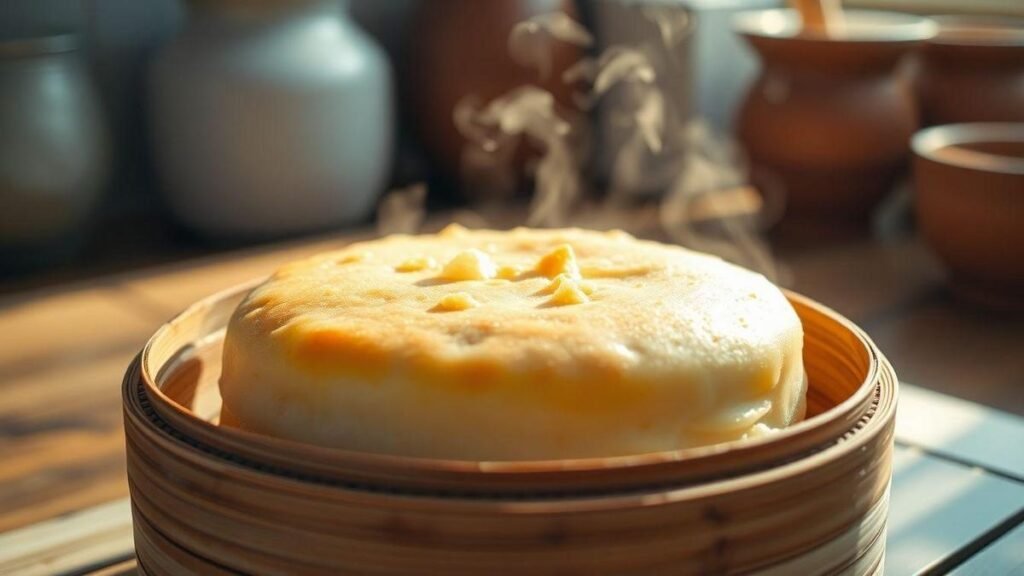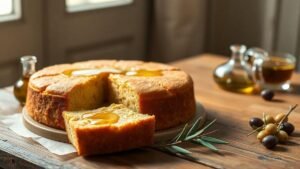I used to think a cake needed an oven. Then I steamed one and survived—no smoke alarms, plenty of crumbs, and a perfect slice. In this how‑to I share my easy oven-free trick to make a steamed cake that’s light, tender, and super moist. You can use a stovetop steamer or a simple pot, mix a quick batter, grease a pan, and steam until perfect. Below: a basic vanilla recipe, practical tips, flavor ideas, topping options, and storage advice so your steamed cake stays soft. Try it once—you might never look back!
- Steamed cake = easy oven-free option
- Results are light, tender, and very moist
- Use a steamer or covered pot, grease a pan, pour batter, and steam
- Includes a basic vanilla recipe plus flavor and topping ideas
- Simple tips for best results and storing leftovers
How to Make a Cake Without an Oven: Easy Steamed Cake That Works Every Time
I love shortcuts, and steaming a cake is my favorite. No oven? No problem. This method makes a cake that’s cozy, forgiving, and fast—perfect for small kitchens or whenever you don’t want to use an oven. If you’re curious about other oven-free approaches, my guide to making cakes without an oven has extra ideas and context.
Why Try a Steamed Cake?
| Reason | Short note |
|---|---|
| Moist | Steam keeps the cake soft and tender. |
| No burn risk | You won’t scorch a steamed cake. |
| Quick | Heats fast on the stove. |
| Great for small kitchens | Perfect if you lack or don’t want to use an oven. |
I learned this after moving into a tiny kitchen—my first steamed cake saved the night.
What You’ll Need
- Steamer or large pot with lid (tight lid recommended)
- Cake pan (7–8 inch round or any heatproof tin) — if you don’t have a pan, see creative options in baking without a cake pan
- Mixing bowls (one for dry, one for wet)
- Whisk or fork (no fancy tools required) — for one-bowl simplicity, check easy one‑bowl cake recipes
- Rack or trivet to keep the pan off the water (metal cookie cutter or crumpled foil works in a pinch)
- Grease or liners (butter, oil, or parchment)
Basic Steamed Vanilla Cake Recipe
| Ingredient | Amount |
|---|---|
| All-purpose flour | 1 1/2 cups (180 g) |
| Sugar | 3/4 cup (150 g) |
| Baking powder | 1 1/2 tsp |
| Salt | 1/4 tsp |
| Eggs | 2 large |
| Milk | 1/2 cup (120 ml) |
| Vegetable oil or melted butter | 1/3 cup (80 ml) |
| Vanilla extract | 1 tsp |
These pantry staples turn into pure joy with a little steam. If you’re experimenting with dairy‑free or vegan swaps, see options for making a cake without eggs and milk or without eggs.
Step-by-Step Instructions
Prepare your steaming setup
- Fill a pot with 1–2 inches (2–5 cm) of water.
- Place a rack or trivet inside so the pan sits above the water.
- Preheat the pot over medium heat with the lid on for 3–5 minutes until it’s steaming.
- Grease the pan well and line with parchment if desired.
Mix the batter
- Whisk dry ingredients (flour, sugar, baking powder, salt) in one bowl. If you’re out of baking powder, see alternatives in making a cake without baking powder.
- In another bowl, beat eggs and sugar until slightly pale.
- Add oil (or melted butter), vanilla, then milk to the eggs. For a lighter crumb try using yogurt—ideas in yogurt-based cakes.
- Fold wet into dry until just combined—don’t overmix.
Pour into greased pan
- Pour batter into the prepared pan.
- Tap gently to release large air bubbles.
- Cover the pan with foil if you’re worried about condensation dripping onto the cake.
Steam
- Bring the pot to a gentle simmer (small bubbles, not a rolling boil).
- Place the pan on the rack.
- Cover the pot and steam for 30–40 minutes (depending on pan size). For very small pans, see tips in making a small cake for two.
- Test with a skewer—if it comes out clean, the cake is done.
- Let cool slightly, then remove from pan.
Note: Resist the urge to lift the lid too often—steam is magic and patience pays.
Tips for the Best Steamed Cake
| Tip | Why it helps |
|---|---|
| Keep water simmering, not boiling | Big bubbles cause wobble and uneven texture. |
| Avoid overmixing | Keeps the crumb tender—if things go wrong, check how to fix common cake blunders. |
| Use room-temperature eggs and milk | Mixes more smoothly and traps air better. |
| Cover pan with foil | Prevents water drops from spoiling the top. |
| Check toward the end | For small pans start testing at 25–30 minutes. |
I mutter encouragement to my cakes—do what works for you.
Flavor Ideas
| Flavor | How to add |
|---|---|
| Lemon | Zest 1–2 tbsp juice |
| Chocolate | Replace 1/3 cup flour with cocoa powder |
| Coconut | Add 1/2 cup shredded coconut |
| Matcha | 1–2 tbsp matcha powder |
| Banana | 1 mashed ripe banana; reduce milk slightly — banana and other fruit swaps are great if you’re experimenting with egg/milk substitutions (see applesauce and other oil replacements) |
Frozen berries can be delicious chaos—toss them lightly in flour before adding.
Topping Options
- Powdered sugar — classic and easy
- Glaze — powdered sugar milk vanilla
- Whipped cream — light and fresh
- Toasted nuts — adds crunch
- Coconut flakes — great on tropical flavors
I like a thin glaze with a sprinkle of toasted nuts.
Storage
| Place | How long |
|---|---|
| Room temp, covered | 1–2 days |
| Fridge (covered) | 4–5 days |
| Freezer (wrapped well) | Up to 1 month |
Tip: Slice before storing so you can grab a piece without fuss. Reheat briefly in a steamer or microwave to refresh—if your cake ever ends up dry, see quick fixes at what to do when your cake is too dry.
Quick Checklist
- Pan greased ✅
- Water simmering ✅
- Batter ready ✅
- Lid on tight ✅
Try it—you might save dinner, cheer a friend, or enjoy cake in pajamas. I’ve done all three.
Related Posts
Conclusion
You don’t need an oven to make a show-stopping cake. Steaming yields an oven-free, light, tender, and gloriously moist cake without smoke alarms—only crumbs and applause. The method is simple: use a stovetop steamer or covered pot, grease your pan, mix a forgiving batter, steam gently, and avoid overmixing. Try it once—you might never look back.
Hungry for more kitchen shortcuts and mildly heroic baking tales? Visit: https://xendrie.com
Frequently Asked Questions
Q: Do I need an oven to steam a cake?
A: No. Use a steamer or covered pot on the stove—steaming works great and is fully oven-free.
Q: How long does a steamed cake take?
A: Usually 25–45 minutes depending on pan size and batter. Test with a toothpick; it should come out clean.
Q: Will the cake be soggy or dense?
A: No—steamed cakes are naturally moist but light. Prevent lid drips (cover pan with foil) and avoid over-steaming. If texture issues arise, a troubleshooting guide can help: cake baking blunders and fixes.
Q: What pan and setup should I use?
A: Any heatproof cake pan works. Grease or line it, place it on a rack in a pot or steamer, and cover while steaming. If you don’t have a cake pan, get ideas for improvised pans here.
Q: How do I store leftovers and reheat them?
A: Cool, wrap, and keep at room temp for 1–2 days or in the fridge up to 5 days. Reheat briefly in a steamer or microwave to freshen.






